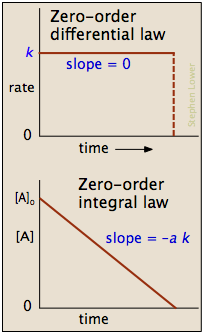Content
- Work in process inventory formula in action
- First in First out Method -FIFO method
- Example of Work-in-Process Inventory
- How do I account for work in progress inventory?
- 5 Process Costing (FIFO Method)
- Calculation of Ending WIP inventory
- Overview of Two Methods Of Treating Beginning Work In Process (BWIP)

For the exact number of work in process inventory, you need to calculate it manually. One of the advantages of calculating it manually will be you can add expenses like the cost of scrap, spoilage of raw material, etc. as well in it since it is all visible during physical counting. Apart from this, calculating work in process expenses is one of the important tasks for financial management. While recording the inventory in the financial balance sheet, work in progress inventory is mentioned as assets. 3PL or third-party fulfillment company provides vital services to eCommerce businesses. They can track inventory, reach out to suppliers, manage the fulfillment process, and route everything through a single system. Most businesses try to cut WIP inventory costs as much as possible due to the complications in accounting for it.

WIP inventory refers to goods that are in production and not yet a finished good. On the balance sheet, WIP inventory is aggregated into the inventory line under current assets along with raw materials and finished goods. WIP inventory also helps companies ensure the flow of production remains uninterrupted. Beginning Work-in-Process Inventory WIP is ignored; there may be an idle time in production as all inventories will be indicated as raw materials or finished products. For work in process, the unfinished products being referred to are anticipated to be completed soon. For example, a bakery that has 20 cakes in production is a work in process.
Work in process inventory formula in action
Being on top of your work in process inventory can help you make better business decisions and keep your clients happy and satisfied. Learn about work-in-process inventory and understand how to use a work-in-process inventory account. The flow of WIP inventory is an indication of how efficient the manufacturer/supplier is at producing the finished goods. Working closely with a supplier and partners in a company’s retail supply chain can help optimize this supply chain. The WIP figure indicates your company has $60,000 worth of inventory that’s neither raw material nor finished goods—that’s your work in process inventory.
How do you calculate standard WIP?
SWIP is calculated as follows:Standard WIP = (Manual Time + Auto Time) / Takt TimeWhen a process is operating at, or slightly less than, Takt Time SWIP will usually be 1 piece. An exception to this rule would be if two sequential processes summed cycle time was less than Takt Time.
Finally, when the product is sold, it moves from a form of inventor to cost of goods sold on the balance sheet. Works in process are included in the inventory line item as an asset on your balance sheet. The two other categories of inventory are raw materials and finished goods . Any raw material inventory that humans have worked on but is not yet considered a finished good is a work-in-process inventory. You can think of WIP inventory as all inventory https://business-accounting.net/ that has not yet reached the finished product inventory but is not raw materials. LIFO is typically a more accurate representation of true market value of materials used in production and will ultimately help with consistency in accounting for final products. LIFO is also popular in accounting because materials received most recently are usually the most expensive, which reduces a company’s tax burden in the near term, preserving cash.
First in First out Method -FIFO method
Effectively managing your inventory is one of the critical steps that one must take to run a successful business. Be sure to partner with software service providers such as Emergeapp to help you achieve your inventory management goals. Production errors– if you use an incorrect system to account for your WIP, it is quite possible that you could wind up with production errors.
- Subtract that from the cost sheet total to get your ending work in process.
- Generally speaking, best practice is to carry as little WIP Inventory as possible.
- ’ It also gives an explanation why work in process is important, how to enhance it, and how to calculate for it.
- In summary, inventory becomes classifiable as work in process when your business must use human labor to finish an item before it can be sold.
- 2) Labor costs are often hard to estimate, so companies use work in process as a way to gauge whether or not they’re spending too much on labor.
The manufacturing costs incurred in this quarter are $200,000, and the cost of manufactured goods is $100,000. Examining your WIP inventory process can reveal gaps in your supply chain, unneeded costs, and the strength of your suppliers. The whole process is based on flow – bringing sellable inventory from a manufacturer, through a supply chain, and to your business. Manufacturing is the process of turning raw materials or parts into finished goods using tools, human labor, machinery, and chemical processing.
